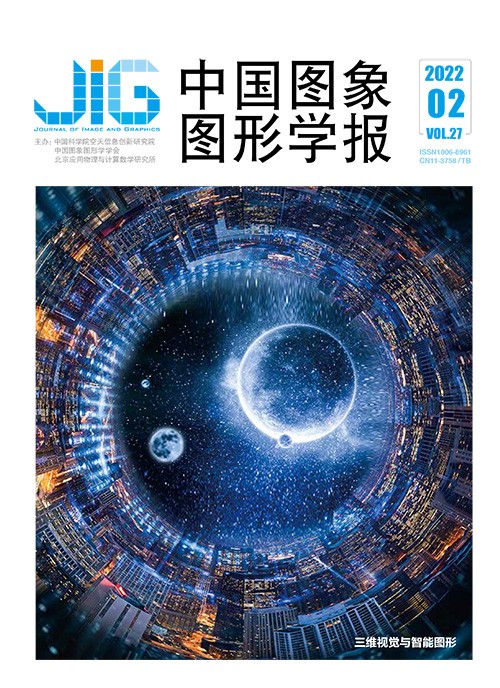
深度学习单目深度估计研究进展
摘 要
单目深度估计是从单幅图像中获取场景深度信息的重要技术,在智能汽车和机器人定位等领域应用广泛,具有重要的研究价值。随着深度学习技术的发展,涌现出许多基于深度学习的单目深度估计研究,单目深度估计性能也取得了很大进展。本文按照单目深度估计模型采用的训练数据的类型,从3个方面综述了近年来基于深度学习的单目深度估计方法:基于单图像训练的模型、基于多图像训练的模型和基于辅助信息优化训练的单目深度估计模型。同时,本文在综述了单目深度估计研究常用数据集和性能指标基础上,对经典的单目深度估计模型进行了性能比较分析。以单幅图像作为训练数据的模型具有网络结构简单的特点,但泛化性能较差。采用多图像训练的深度估计网络有更强的泛化性,但网络的参数量大、网络收敛速度慢、训练耗时长。引入辅助信息的深度估计网络的深度估计精度得到了进一步提升,但辅助信息的引入会造成网络结构复杂、收敛速度慢等问题。单目深度估计研究还存在许多的难题和挑战。利用多图像输入中包含的潜在信息和特定领域的约束信息,来提高单目深度估计的性能,逐渐成为了单目深度估计研究的趋势。
关键词
Review of monocular depth estimation based on deep learning
Luo Huilan, Zhou Yifeng(School of Information Engineering, Jiangxi University of Science and Technology, Ganzhou 341000, China) Abstract
The development of computer technology promotes the development of computer vision. Nowadays, more researchers focus on the field of 3D vision while monocular depth estimation is one of the basic tasks of 3D vision. Depth estimation from a single image is a critical technology for obtaining scene depth information. This technology has important research value because it has potential applications in intelligent vehicles, robot positioning, and other fields. Compared with traditional depth acquisition methods, monocular depth estimation based on deep learning has the advantages of low cost and simple operation. With the development of deep learning technology, many studies on monocular depth estimation based on deep learning have emerged in recent years, and the performance of monocular depth estimation has made great progress. The monocular depth estimation model needs a large a large amount of data to train the model. The commonly used training data types include RGB and depth (RGB-D) image pairs, stereo image pairs, and image sequences. The depth estimation model training by RGB-D images first extracts the image features through convolutional neural network and then predicts the depth map by using the method of continuous depth value regression. After predicting the depth map, several models use conditional random fields or other methods to optimize the depth map. Unsupervised learning is often used to train the monocular depth estimation model when the training data types are stereo image pairs and image sequences. The monocular estimation model training by stereo image pairs first predicts the disparity map and then estimates depth by using the disparity map. When an image sequence is used to train the model, the model first predicts the depth map of an image in the image sequence, and then the depth estimation model is optimized by images reconstructed by the depth map and other images in the sequence. To improve the accuracy of depth estimation, several researchers use semantic tags, depth range, and other auxiliary information to optimize depth maps. Several data sets can be used for multiple computer vision tasks such as depth estimation and semantic segmentation. Several researchers improve the accuracy of depth estimation by learning depth estimation and semantic segmentation model jointly because depth estimation has a strong correlation with semantic segmentation. When establishing the depth estimation data set, depth camera or light laser detection and ranging (LiDAR) is used to obtain the scene depth. Depth camera and LiDAR are based on the principle that light and other propagation media will reflect when they encounter objects. The depth range obtained by depth cameras and LiDAR is fixed because the propagation medium is dissipated in the transmission, and depth cameras and LiDAR cannot measure depth while the propagation medium energy is very small. Several models first divide the depth range into several depth intervals, take the median value of the depth interval as the depth value of the interval, and then use the method of multiple classifications to predict the depth map. Different training data types not only result in different network model structures but also affect the accuracy of depth estimation. In this review, the current monocular depth estimation methods based on deep learning are surveyed from the perspective of the training data type used by the monocular depth estimation model. Moreover, the single-image training model, the multi-image training model, and the monocular depth estimation model of auxiliary information optimization training are separately discussed. Furthermore, the latest research status of monocular depth estimation is systematically analyzed, and the advantages and disadvantages of various methods are discussed. Finally, the future research trends of monocular depth estimation are summarized.
Keywords
|



 中国图象图形学报 │ 京ICP备05080539号-4 │ 本系统由
中国图象图形学报 │ 京ICP备05080539号-4 │ 本系统由